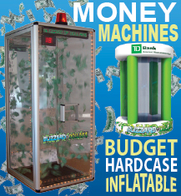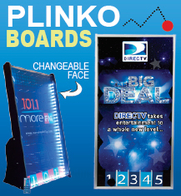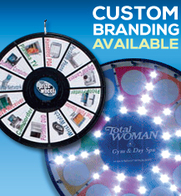 All successful trade shows are driven by their marketing goals and objectives. When approached without a convention marketing plan, the results are predictably varied. By creating a detailed exhibition marketing plan of action, organizations can track and measure their performance in the context of the company’s larger mission.
All successful trade shows are driven by their marketing goals and objectives. When approached without a convention marketing plan, the results are predictably varied. By creating a detailed exhibition marketing plan of action, organizations can track and measure their performance in the context of the company’s larger mission.
It is only by reviewing this performance after the trade show that they can properly evaluate the effectiveness of their convention marketing efforts over time. If an organization fails to meet its target goals, it is usually due to inaccurate assumptions within the exhibition marketing plan, unreasonable expectations of the marketing tactics deployed, or a performance failure.
You can take advantage of this same level of performance analysis by developing a trade show marketing plan. It should include a detailed description of your target market, primary competitors, trade show strategy, and a variety of other components. Below, I’ll provide an overview of the most important elements to evaluate when developing your trade show marketing plan.
Situation Analysis
- Product analysis: features of the product, benefits delivered to the target market, and product branding strategy
- Price analysis: how pricing is structured for vendors, distributors, and users
- Top-level promotion analysis: overview of advertising, marketing, and promotional strategies (includes media, public relations, and product positioning)
Target Market Analysis
- Demographics and psycho-graphics: gender, income, vocation, purchasing patterns, etc.
- Market traits: benefits sought, reasons, frequency, and manner in which the product is used
- Positioning within the market: perception of the product and position relative to competitors’ products
- Purchasing process: who makes the buying decisions, what is the product’s purchase cycle, and essential information required before a decision is made
- Size of target market: estimate of current market size, estimate of potential market size, and estimate of future market growth
Competitor Analysis
- Target market: who the competitors serve and how they reach their market.
- Pricing: competitors’ price structures, including incentives and discounts
- Promotion: competitors’ promotional activities and distribution network
- Strengths and weaknesses: market perception of competitors, financial stability, etc.
Financial Analysis
- Sales: by industry, market segment, product category, distribution sectors, company-wide
- Profit: revenue, marketing expenses, gross profit, net profit, return on investment, contribution to company profit
Marketing Strategy Analysis
- Tactics: branding, positioning, publicity, promotional, word of mouth, viral, advertising, and marketing activities.
- Segmentation: how tactics are deployed by geography, product category and distribution channels
- Pricing: structure and methods of pricing, use of discounts, elasticity relative to market dynamics, break even analysis
Budget Analysis
- Allocation to tactics: budget allocation to each marketing tactic (ref. Marketing Strategy Analysis)
- Allocation to market: budget allocation to each segment of the target market
- Timeline: budget allocation by month and year
The main benefit of creating a trade show marketing plan is that it provides a distinct road map that guides your entire strategy. Within successful convention marketing plans, there is not ambiguity. If your company fails to reach its marketing goals and overall objectives, it’s likely due to a performance breakdown or unreasonable expectations. It’s common for many business owners to miscalculate one or multiple elements in an exhibition marketing plan. When this happens, the company’s stated projections will usually be missed.
For example, if your marketing tactics yield the expected results, yet you have incorrectly forecasted the size of your target market, your company will not meet the objectives detailed in your plan. Similarly, if you have correctly forecasted the size of your target market, yet have miscalculated your main competitor’s reach into that market, it’s likely that their marketing efforts will encroach upon your own. The result? A failure to meet projections.
The important thing to remember about your trade show marketing plan is that it’s not a static document. It’s fluid and changes over time. Market dynamics shift. The internal direction or capabilities of your company will likely do the same. When these things happen, your marketing plan will need to be updated.
Jonathan Edelman provides helpful advice about trade show strategies. With years of experience in the trenches, he is an expert on booth displays, follow up techniques, and using trade show marketing strategies to boost revenue.



















